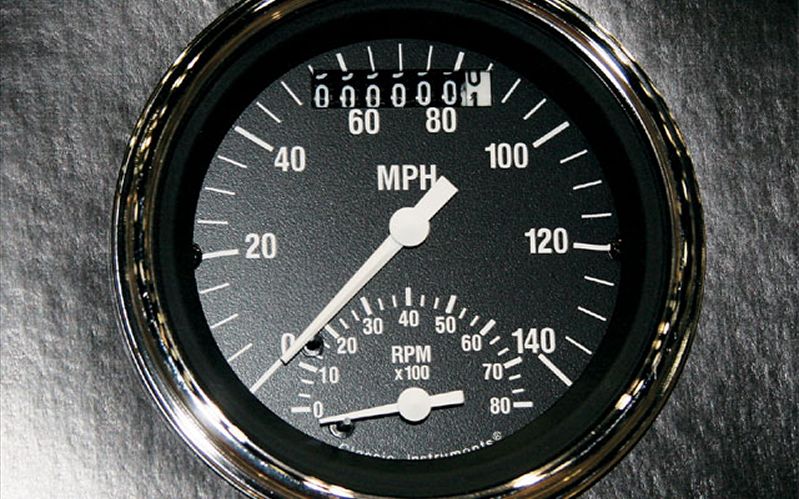Of the many devices found on your vehicle’s dashboard, the speedometer is probably what you look at most often. As its name implies, the speedometer displays your vehicle’s instantaneous speed. Speed is very simply defined: it’s the distance you travel divided by the time you take. However, measuring your average speed after you’ve traveled is not actually that much help. With ingenious use of electromagnetism, you can know the speed you’re going at any given moment.
The first speedometers were expensive and available only as options. It wasn’t until 1910 that automobile manufacturers began to include the speedometer as standard equipment. There are two types of speedometers: electronic and mechanical. As mechanical speedometer is actually a relatively new invention (The first all-electronic speedometer didn’t appear until 1993). Here in this article we will focus primarily on the mechanical speedometer, or the eddy-current speedometer.
Mechanical speedometers were conceived as a solution to the dramatic increase of serious accidents caused by vehicles with high speed. With this invention, drivers could see exactly how fast they were traveling and make adjustments accordingly. At the same time, many countries established speed limits and used police officers to enforce them. Thus, the speedometer comes with two dials — a small dial for the driver and a much larger dial mounted so police could read it from a distance. So how the car’s wheels rotating speeds are transferred into readings on a speedometer? First of all, let’s give the whole mechanism a description. The shaft that turns the car’s wheels is connected to the speedometer by a long, flexible cable made of twisted wires. We can treat this cable as a mini driveshaft. When the shaft rotates, it turns a magnet inside the speed cup of the speedometer at the same speed (the magnet and the speed cup are not connected together, they are separated by air). The speed cup is restrained by a hairspring. Thus, when the engine turns over, the driveshaft turns, makes the speedometer cable turn as well. The cable spins a magnet around at the same speed inside the speed cup continually. Due to the magnet’s spinning, eddy currents are created in the speed cup. The eddy currents make the speed cup rotate in the same direction to catch up with the magnet. This rotation tightens the hairspring and the hairspring in turn restrains the motion of speed cup. It is the speed cup that turns the pointer up the dial, indicating the car’s speed.
Although it is a marvelous breakthrough in car technology, there are drawbacks. Since it relies on interactions between so many mechanical parts, as they wear out, or fail suddenly, the whole contraption instantly becomes useless—and it takes a mechanic to make a repair. Its Long speedometer cables also pose a problem as it is applied in large commercial vehicles. In addition, people find it troublesome to take their eyes off the road to figure out where the needle is on the dial especially at night. So, with technology development, electronic speedometer is introduced as an attempt to solve these problems. We’ll talk about it in our next article.

What speed do car mechanical speedometers actually diaplay
by
Tags:
